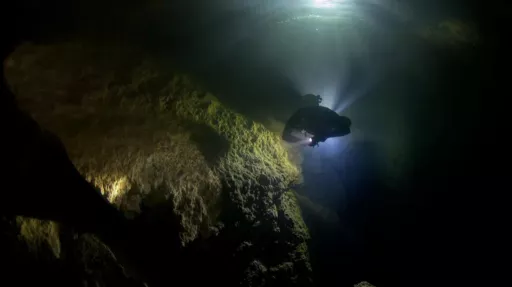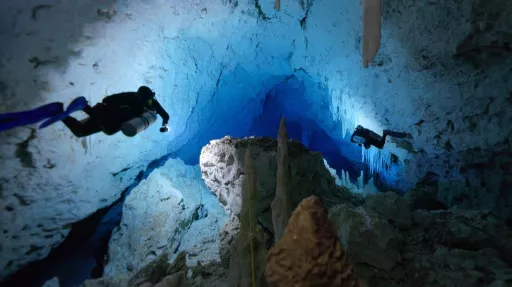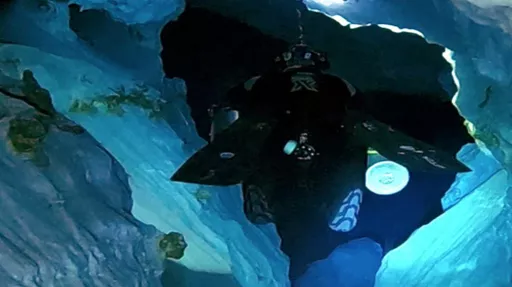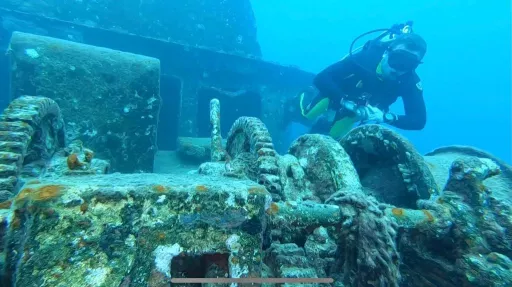Sea Turtles and Diving Spots in the Dominican Republic
Leatherback Turtle (Dermochelys coriacea)
The leatherback turtle, Dermochelys coriacea, is the largest of all living turtles and is distinguished by its unique shell, which is composed of a layer of tough, rubbery skin reinforced by thousands of tiny bone plates. This gives it a leathery appearance, unlike other sea turtles with hard shells. Leatherback turtles can grow up to 7 feet long and weigh over 2,000 pounds. They are known for their incredible migratory patterns, traveling thousands of miles across oceans to feed and nest.
Leatherbacks primarily feed on jellyfish, which helps control jellyfish populations and maintain the balance of marine ecosystems. These turtles are found in all tropical and subtropical oceans and even venture into colder waters. However, they are critically endangered due to threats like habitat loss, plastic pollution, accidental capture in fishing gear, and climate change.
Cheloniidae Family
The Cheloniidae family includes several species of sea turtles, such as the green turtle (Chelonia mydas), hawksbill turtle (Eretmochelys imbricata), loggerhead turtle (Caretta caretta), and olive ridley turtle (Lepidochelys olivacea). These turtles are characterized by their hard shells and are primarily found in warm, tropical, and subtropical seas.
Green Turtle (Chelonia mydas)
Green turtles are named for the greenish color of their fat, which is due to their herbivorous diet consisting mainly of seagrasses and algae. They have a streamlined shell and can grow up to 5 feet in length and weigh up to 700 pounds. Green turtles are found in tropical and subtropical oceans worldwide. They are known for their long migrations between feeding grounds and nesting sites. Green turtles face threats from habitat destruction, poaching, bycatch in fishing gear, and climate change.
Diving Spots in the Dominican Republic to See Sea Turtles
The Dominican Republic is a fantastic destination for scuba diving, offering various spots where divers can encounter different species of sea turtles, including leatherbacks and green turtles. Some of the best diving spots include:
1. Bayahibe
Located on the southeast coast, Bayahibe is renowned for its clear waters and vibrant marine life. The reefs and wrecks in this area are home to various sea turtles, including green turtles. The nearby Parque Nacional del Este also provides excellent opportunities to see these majestic creatures.
2. Saona Island
Part of Parque Nacional del Este, Saona Island is a popular spot for divers and snorkelers. The island's waters are teeming with marine life, and divers often spot green turtles and occasionally leatherbacks.
3. Catalina Island
Catalina Island, located near La Romana, offers stunning coral reefs and underwater gardens. The clear waters around the island are frequented by green turtles, making it a great spot for turtle encounters.
4. Silver Bank
For those interested in a more adventurous diving experience, Silver Bank is a submerged bank located in the Atlantic Ocean, north of the Dominican Republic. While it is primarily known for humpback whale watching, divers can also encounter leatherback turtles in these waters.
5. Punta Cana
Punta Cana, on the easternmost tip of the country, is famous for its beautiful beaches and excellent diving spots. The reefs and underwater caves in this area are home to various marine species, including green turtles.
Conservation Efforts
While enjoying the beauty of these magnificent creatures in their natural habitat, it is crucial to be mindful of conservation efforts. Many organizations in the Dominican Republic are dedicated to protecting sea turtles through initiatives like nest monitoring, beach cleanups, and education programs. Supporting these efforts helps ensure that future generations can continue to witness the wonder of sea turtles in the wild.



